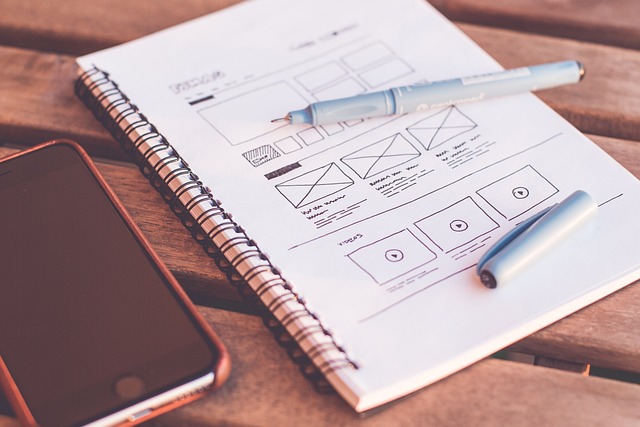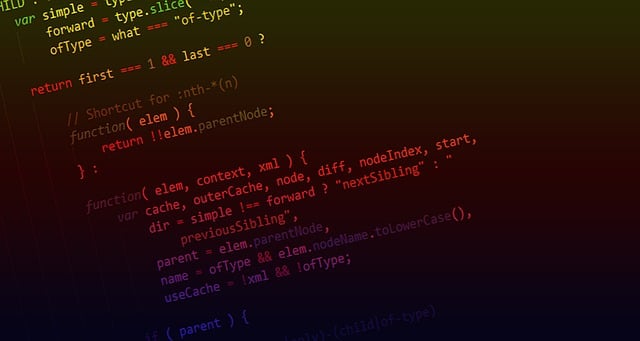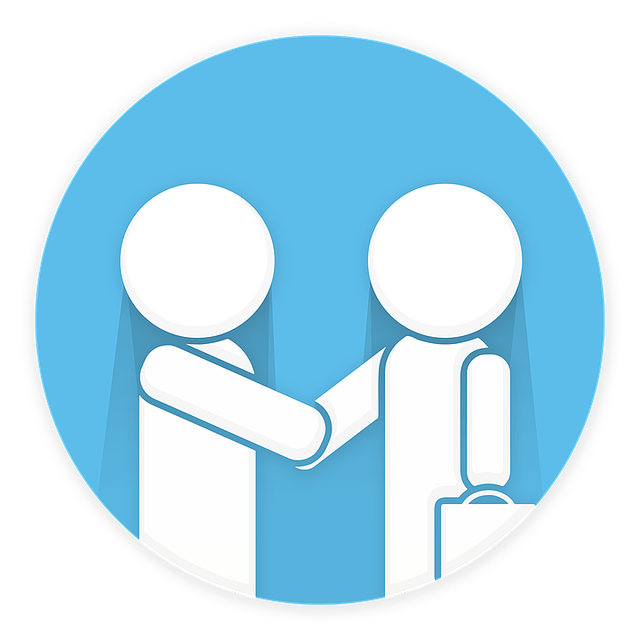Custom web design is a strategic approach that goes beyond aesthetics, focusing on understanding user behavior, market trends, and brand identity. It involves collaborative efforts between designers and developers for wireframing, prototyping, and iterative testing. This process results in unique experiences that enhance conversion rates, foster brand loyalty, and set businesses apart. Using tools like Adobe XD, Figma, and InVision, designers create visually appealing interfaces with engaging visuals, strategic color palettes, and thoughtful typography. User research and usability testing ensure intuitiveness and functionality. Case studies highlight successful transformations, while future trends include voice user interfaces, AR interactions, and sustainable design practices.
Custom web design goes beyond generic templates, crafting unique user experiences tailored to specific business goals. This in-depth exploration delves into the multifaceted world of custom UI/UX design, highlighting its immense benefits for growth and engagement. From initial concept creation to final usability testing, we unravel the process, tools, and best practices ensuring impactful digital solutions. Discover how custom design drives success through engaging visuals, user-centric research, and robust implementations—all while staying ahead of evolving trends shaping the future of online interactions.
Understanding Custom Web Design: Unlocking Unique User Experiences

Custom web design goes beyond the basics of creating visually appealing websites. It involves tailoring every element to meet the specific needs and preferences of a particular audience, ensuring an unparalleled user experience. By understanding the unique goals and challenges faced by your target users, you can unlock a world of possibilities in terms of functionality, usability, and aesthetics. This approach demands a deep dive into user behavior, market trends, and brand identity to craft interfaces that not only captivate but also deliver.
In the realm of custom web design, every pixel is considered with an eye towards optimization. Designers and developers work collaboratively to build digital experiences that are not just visually stunning but also intuitive and engaging. This meticulous process involves crafting wireframes, prototyping, and iterative testing to ensure the final product seamlessly aligns with user expectations and business objectives. The result? A competitive edge in today’s digital landscape, where a unique, personalized experience can set a brand apart.
Benefits of Tailored UI/UX for Business Growth

In today’s competitive market, businesses are realizing the immense potential of custom UI/UX design in driving growth and fostering customer engagement. A tailored web design goes beyond aesthetics; it enhances user experience by streamlining navigation, simplifying interactions, and delivering content in a personalized manner. This strategic approach not only improves conversion rates but also fosters brand loyalty by creating a unique digital footprint that sets a business apart from its competitors.
Custom UI/UX design allows businesses to leverage data-driven insights for informed decision-making, resulting in user interfaces that are intuitive and user-centric. By understanding the target audience’s preferences, behaviors, and pain points, designers can create solutions that resonate deeply with users. This level of personalization not only boosts customer satisfaction but also encourages repeat visits, ultimately contributing to sustainable business growth.
The Process: From Concept to Customized Interface

The journey of creating a unique and tailored user interface (UI) and user experience (UX) for a website or application begins with a conceptual phase. It involves understanding the client’s vision, target audience, and business goals. Skilled designers then translate these ideas into a comprehensive design strategy, focusing on usability, aesthetics, and brand identity. This initial stage includes wireframing, prototyping, and creating low-fidelity visuals to lay the groundwork for the final product.
As the process evolves, designers refine these concepts through user research, feedback sessions, and iterative design cycles. They meticulously craft high-fidelity mockups, considering every visual element, color palette, and layout decision. The goal is to create a seamless and engaging experience, ensuring the interface aligns with users’ expectations and exceeds their needs. This customization goes beyond aesthetics, delving into intuitive navigation, responsive design for various devices, and optimized user journeys.
Building a Strong Foundation: Essential Tools and Technologies

In the realm of custom web design, building a strong foundation is paramount. It starts with choosing the right tools and technologies that align with project requirements and target audience needs. Modern designers leverage a diverse array of software, including Adobe XD, Figma, Sketch, and InVision, to create visually stunning and user-friendly interfaces. These platforms offer intuitive drag-and-drop functionality, enabling designers to craft wireframes, mockups, and prototypes efficiently.
Furthermore, integrating design systems and component libraries ensures consistency across various platform and device types. This not only speeds up the development process but also enhances usability for end-users. With a robust foundation in place, custom web design professionals can focus on crafting unique experiences that captivate audiences, drive engagement, and ultimately elevate brand identity in today’s competitive digital landscape.
Creating Engaging Visuals: Color, Typography, and Layout

In the realm of custom web design, creating engaging visuals goes beyond mere aesthetics; it’s a strategic approach to captivate and guide users through a seamless digital experience. Color plays a pivotal role, as thoughtfully selected palettes can evoke emotions, establish branding, and enhance readability. A subtle yet powerful tool, typography, is also instrumental in conveying information efficiently while maintaining visual appeal. From clean sans-serif fonts for modern interfaces to elegant serif types for traditional designs, the choice of typefaces directly impacts the overall ambiance and accessibility of a website or application.
Layout, as the backbone of UI design, ensures that elements are arranged logically, promoting user interaction and comprehension. Balancing content, white space, and visual hierarchy creates a harmonious structure that encourages users to explore further. In the context of custom web design, where each project is unique, these visual elements merge to craft an experience tailored to specific brand identities and user needs, solidifying the importance of engaging visuals in creating memorable digital interactions.
User Research: Crafting Solutions Around User Needs

User research is a cornerstone in custom web design, enabling designers and developers to create solutions that truly meet user needs. It involves gathering insights into user behavior, preferences, and pain points through various methods like interviews, surveys, and usability testing. By understanding who users are, what they want to achieve, and the challenges they face, designers can tailor interfaces and experiences that offer intuitive navigation, clear communication, and seamless interactions.
This empathetic approach ensures that the final product is not just aesthetically pleasing but also functionally effective. Custom web design that incorporates user research yields higher user satisfaction, improved conversion rates, and better retention—all vital metrics for any successful online platform. It’s about crafting interfaces that users love, rather than imposing a one-size-fits-all solution.
Usability Testing: Refining the Design for Optimal Performance

Usability testing is an integral part of the custom UI/UX design process, especially for custom web designs. It involves gathering feedback from real users to evaluate how well a design meets their needs and expectations. By observing users interacting with the interface, designers can identify pain points, gather insights into user behavior, and make data-driven improvements. This iterative approach ensures that the final product is not only aesthetically pleasing but also highly functional and intuitive.
Through usability testing, custom web design teams can refine every element, from wireframes to micro-interactions, to deliver an optimal user experience. By prioritizing user feedback, designers can create interfaces that are not just visually appealing but also easy to navigate, efficient to use, and ultimately successful in achieving their business objectives. This process helps to bridge the gap between design intent and actual user behavior, leading to more effective and engaging custom web designs.
Case Studies: Successful Custom Web Design Implementaions

Custom web design case studies offer a window into the success of tailored digital experiences. By examining real-world implementations, we gain valuable insights into best practices and innovative approaches that elevate user interfaces (UI) and user experiences (UX). These case studies highlight how custom design thinking can solve complex problems, cater to unique business needs, and create visually appealing, intuitive websites that drive engagement and conversions.
For example, a recent study showcased a startup’s transformation from a cluttered, confusing site to a sleek, modern e-commerce platform. Through user research and a deep understanding of their target audience, designers crafted a custom web design featuring streamlined navigation, compelling product displays, and seamless checkout processes, ultimately boosting sales by 30% within the first quarter. Such success stories underscore the transformative power of custom UI/UX design in achieving business objectives and delivering exceptional online experiences.
Future Trends: Shaping the Evolution of Custom UI/UX

The future of custom UI/UX design is brimming with exciting possibilities, driven by technological advancements and evolving user expectations. As we move further into the digital age, custom web design will continue to be a cornerstone in creating engaging and personalized user experiences. Trends like voice user interfaces and augmented reality (AR) interactions will reshape how users interact with applications, demanding innovative approaches from designers. Voice commands and gesture controls are set to become more prevalent, requiring intuitive and accessible design solutions that cater to diverse user preferences.
Additionally, there’s a growing emphasis on sustainability and ethical design practices. Users are increasingly conscious of the environmental impact of digital products, leading to a demand for eco-friendly interfaces and minimalist aesthetics. Custom UI/UX designers will need to adapt by incorporating sustainable design principles, ensuring that their creations not only look aesthetically pleasing but also contribute to a greener digital landscape. These trends signal a future where custom web design becomes even more dynamic, responsive, and aligned with users’ needs and values.
